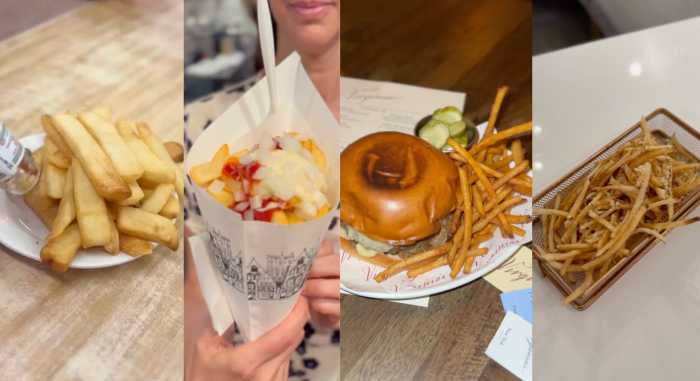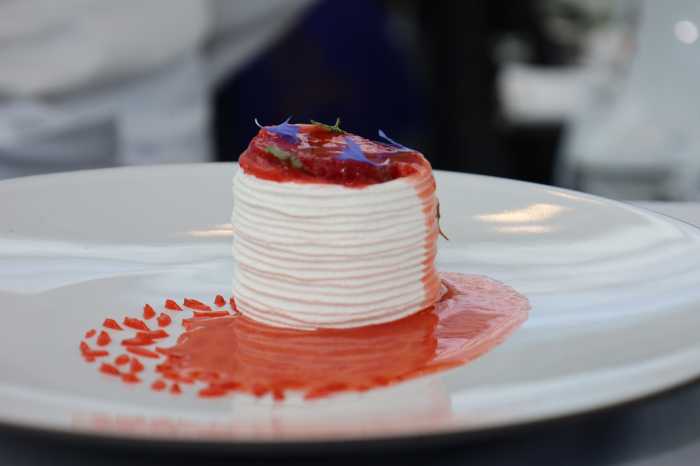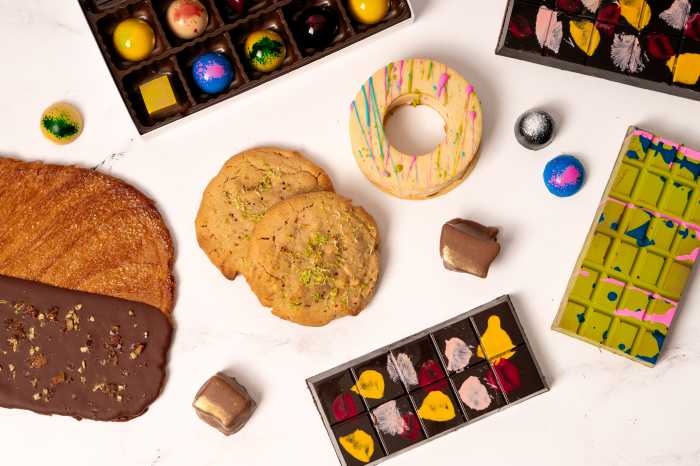Oona Tempest, 24, lost her birth father — a fisherman by trade — when she was one year old. She met the sushi chef she calls her “adopted father” almost twenty years later, working as a substitute waitress at his Upper East Side restaurant in 2013.
“He’s the one I really consider my master,” Tempest said of Tanoshi Sushi’s Toshio Oguma. “I learned most of my skills from him.”
Oguma could be a strict teacher at times, but Tempest — a Massachusetts native who moved to New York to study art but today serves chef-curated omakase meals under the name Sushi by Bae — admired his passion and principles: “His philosophy was just focus on sushi, just focus on your work. That was really beautiful to me as an artist,” she said.
“Oguma-san was really great with teaching anyone: He really didn’t care who you are, what you looked like, where you came from — as long as you were polite, very respectful, on time and devoted to sushi.”
Tempest’s gender and Jewish heritage made her an unlikely apprentice. Still, Oguma instructed her in not only the art of making sushi, but more practical matters: how to save money, by conserving plastic wrap for example, and how to stand up to suppliers selling fish beneath her standards.
“He would always yell at me and be like, ‘When you’re on your own someday, you’ll think of me and you’ll thank me,’” his pupil recalled. “And since being on my own, I’ve had so many moments like, ‘He was right about that.’”
Named one of Zagat’s “30 under 30 rock stars” redefining the restaurant industry in New York City in 2016, Tempest struck out on her own, working for a brief time at the now two Michelin-starred Sushi Ginza Onodera. Earlier this year, she partnered up with friend and fellow sushi chef David Bouhadana to offer at his Gansevoort Market sushi counter her own 90-minute, four-seat $100 omakase experience. She’s brought that Sushi by Bae concept to Bouhadana’s new Sushi by Bou spot at the Jue Lan Club, a posh Chinese eatery in the Flatiron District.
How does an art student become a solo-flying sushi chef at age 24? Here’s what we learned about that voyage when we spoke to her:
1. She moved to New York to study art at the School of Visual Arts, where her thesis involved sushi.
Tempest’s multidisciplinary major was Visual & Critical Studies — “a real thing that sounds fake,” in her words. She focused on illustration and drew lots of fish. (The adorable catfish logo that represents the “Sushi by Bae” concept is her own design, one she’s been doodling since she was three years old.) Her almost 50-page thesis paper, which she completed just as she was starting her apprenticeship with Oguma at Tanoshi, addressed the “cultural importance of sushi as an art form and a food.”
2. She considers herself an artist whose medium is food, rather than a chef.
“Nigiri,” the kind of sushi that consists of raw fish served over pressed rice, “means ‘to squeeze,’ so your hands are making sushi, you’re putting pressure on it,” Tempest explained. “It’s kind of like working with clay … in that every artist has a slightly different hand, everyone has a little different pressure.” (Tempest’s hands, for example, are smaller than the average male sushi chef’s.)
In addition to shaping rice, she added, “There are artful ways to score the fish that make it fold more aesthetically over the rice than [other ways].” Tempest pays close attention to the way her sushi looks when it’s served, so she’s developed her own techniques for cutting fish to present it from its best angle.
3. As Tempest sees it, there’s a lot more to sushi than cutting and molding fish.
“It’s so multilayered, I’m never ever bored with it,” she said of her job. Beyond ordering the right seafood from Japan and filleting it when it arrives, “you need to know all about the fish because customers want to know scientifically what family it is from and what it’s similar to and what seasons it’s good in,” Tempest said. “You need to know a bit about marine biology and the way the ocean works.”
Then there’s the social intelligence required to serve her customers and cater to their individual tastes every night. She’ll ask them about their dietary restrictions and the flavors they like. “I get to meet a lot of people, so it’s not isolating me… It stimulates all parts of my brain.”
4. She specializes in edomae-style sushi, which involves a lot of curing.
Literally, “edomae” translates into “in front of Tokyo”; figuratively, it refers to fish from the city’s bay and abstractly, “It’s one of those things that sushi chefs philosophize over, like what is the meaning of art,” Tempest said.
Her own style of sushi incorporates an “edomae style” of curing fish with salt, vinegar, seaweed or miso, “so it’s not like I’m just grabbing something out of the ocean, slicing it open and serving it.”
5. Tempest calls her time at Sushi Ginza Onodera a stint in the “sushi military.”
“They have two Michelin stars, and there’s a reason for that,” she said of the upscale omakase eatery, a branch of a Tokyo-based chain. “The chef was very, very strict. The hours were extraordinarily long hours.”
Tempest was accustomed to being the only woman in the kitchen, but at Sushi Ginza Onodera, she was also the only chef who wasn’t Japanese. The language barrier challenged her in ways that were both difficult and rewarding: “I learned a lot more of the language because of the immersion. Someone yelling you at five times to grab this one thing, but you don’t know what it is — you finally figure it out.”
Illness ultimately cut short her training under the “remarkable chef” Masaki Saito, she said.
6. She hit it off with fellow sushi chef David Bouhadana (the “Bou” to her “Bae”) because they both felt like “outsiders” among their colleagues and friends.
“We’re similar, funny people with a Jewish background,” Tempest said, crediting their first meeting to mutual customers who predicted they’d be fast friends. “For me, he was the first other person I could really relate to, going through a really intense apprenticeship like I have. Even with my other friends from art school — no one could really comprehend what I was doing, or why I disappeared for three years, because I was working so much. And then I met David, and he’s like, ‘No, no, no, I get it, I went through it.’” (She said she admires the three years that the Florida-born Bouhadana spent apprenticing in Japan; of accusations that his habit of speaking English in Japanese accent during service is offensive to Asian Americans, she commented, “I stay away from drama because of the respect I have for this art but if that were true, I wouldn’t be working side by side with Chef David. Being together under the same roof of Sushi by Bou has allowed my customers, family and friends to witness firsthand how much David loves the Japanese culture and how he, like me, has devoted the rest of his life to it.”)
Tempest also dealt with disparaging co-workers: “I would get laughed at a lot,” said the chef who attributes her resilience to her mother’s example. “People would never take me seriously. That was the biggest thing I was fighting with, being like, ‘I am a legit chef like these other guys. I get I don’t look like it, but I am.’”
7. She wears black when she’s working, instead of the traditional white sushi chef uniform.
“This is just what fits me,” she said of her sartorial choices behind the counter. A uniform designed for a man’s shoulder-to-waist ratio and someone much taller than five-foot-two would impede her work, she added.
Moreover, she likes the color black “because it fades into the background — it’s not stealing your attention,” Tempest said. “I’d rather have the attention be on the food than on me.”
You can reserve a meal with Tempest at the Jue Lan Club (49 W. 20th St.) by texting 347-495-4221.





































